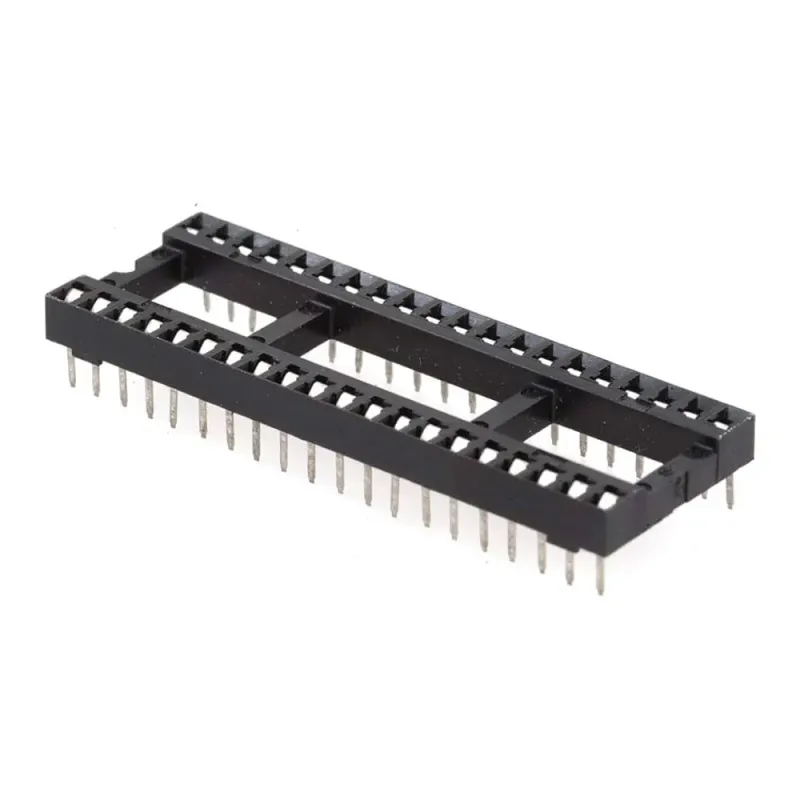
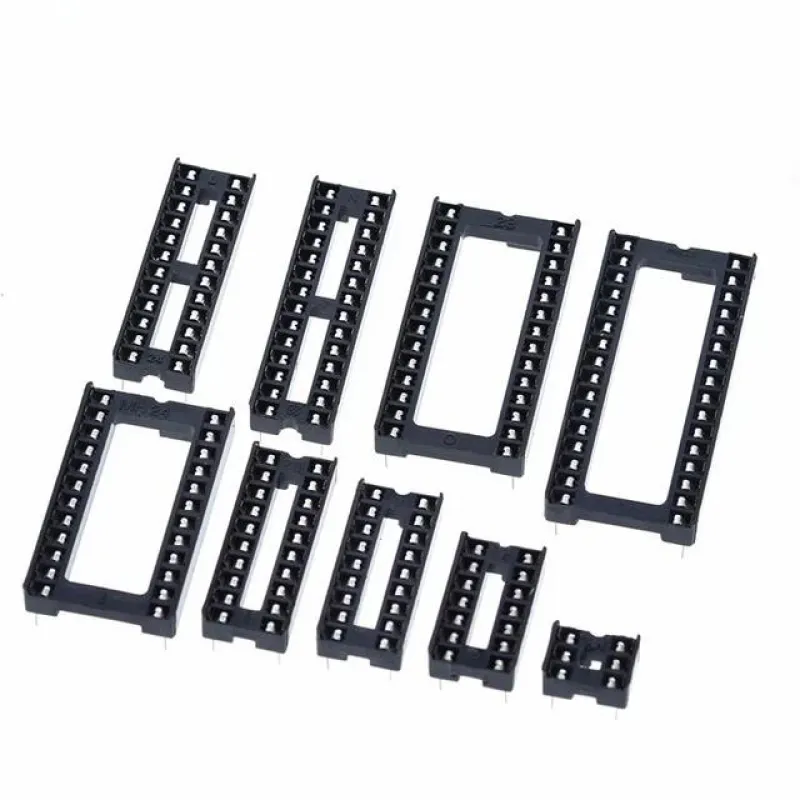
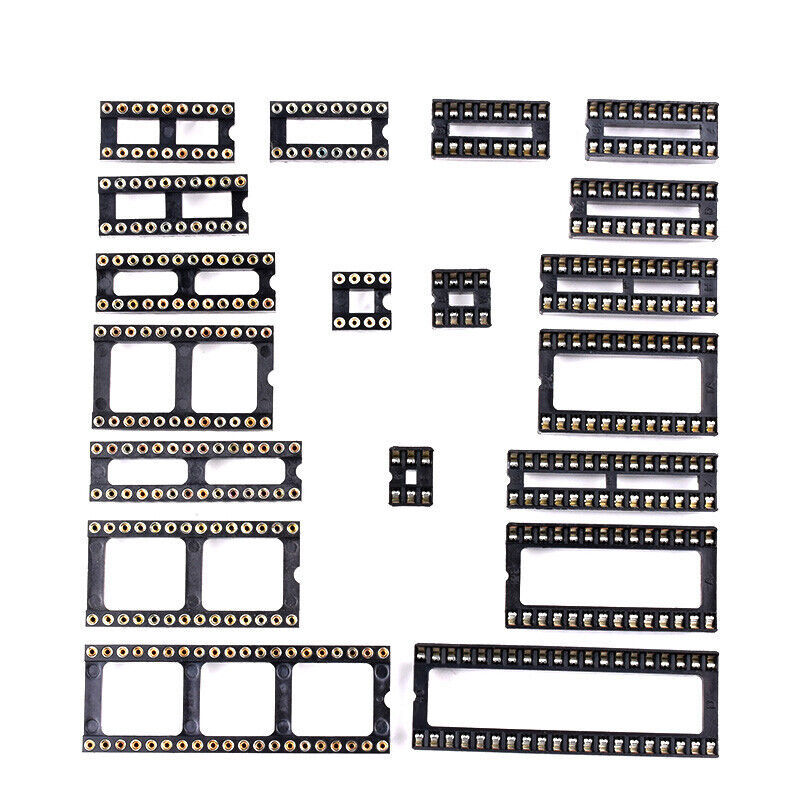
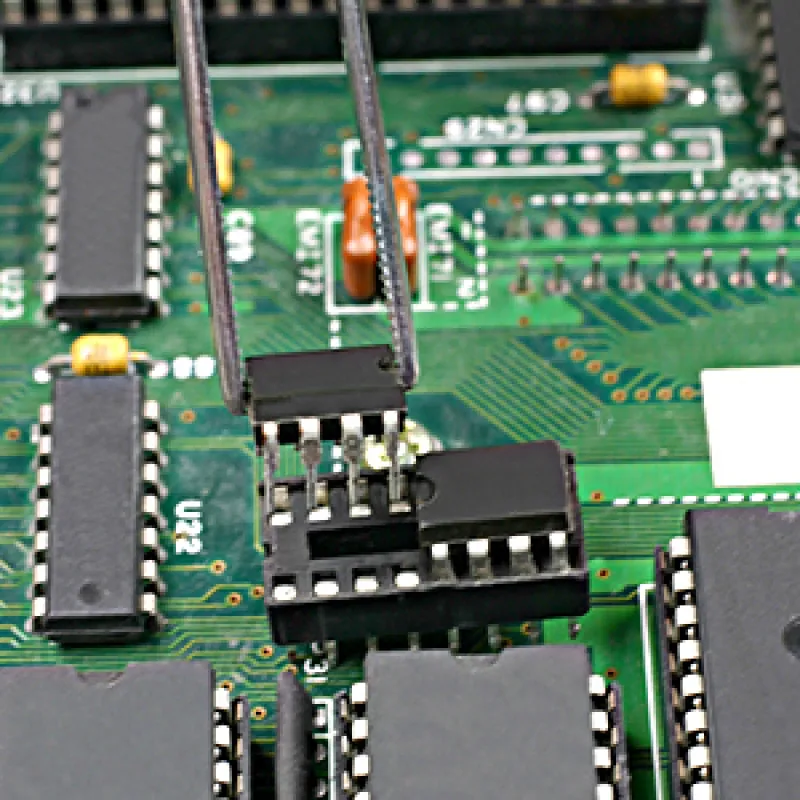
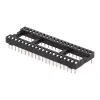
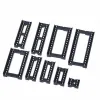
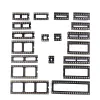
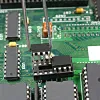
IC Socket 2x20 - DIP 40-Pin Integrated Circuit
1.43RON
- Stock: In Stock
- Model: ICCXXX.DIP40P
Your orders placed until 16:30 on weekdays are shipped on the same day.
IC Socket 40 Pins DIP-40 2x20 Integrated Circuit
Integrated Circuit (IC) sockets function as connectors that facilitate the easy insertion and removal of ICs from a printed circuit board (PCB). They offer a practical solution for mounting ICs without the need for direct soldering to the PCB, which proves advantageous during prototyping, testing, and repair processes.
Key Features:
- Ease of Use: Ideal for prototyping and testing due to the ease of IC insertion and removal.
- Protection: Protects ICs from potential heat damage during the soldering process.
- Versatility: Comes in a variety of sizes and configurations to suit different IC packages.
- Reusability: IC sockets can be reused, facilitating easy IC replacement without the need for desoldering.
Types of IC Sockets:
- DIP (Dual In-Line Package) Sockets: Designed for ICs with two parallel rows of pins. Common pin counts include 8, 14, 16, 20, 24, 28, 40, etc. Widely used in prototyping and development boards.
- SIP (Single In-Line Package) Sockets: Designed for ICs with a single row of pins and are used for specific types of ICs or modules.
- ZIF (Zero Insertion Force) Sockets: Allow for the insertion and removal of ICs without any insertion force. They use a lever or cam mechanism to secure the IC and are ideal for testing and programming where frequent IC changes are required.
- PLCC (Plastic Leaded Chip Carrier) Sockets: Designed for PLCC IC packages, which have leads on all four sides. Common pin counts include 20, 28, 32, 44, 52, 68, etc. Used in applications requiring high pin counts.
- BGA (Ball Grid Array) Sockets: Designed for ICs with an array of solder balls on the bottom and are used in high-density, high-performance applications like CPUs and GPUs.
- PGA (Pin Grid Array) Sockets: Designed for ICs with an array of pins arranged in a grid pattern and are common in older CPU sockets and some high-power applications.
Advantages of Using IC Sockets:
- Flexibility: Facilitates easy swapping of ICs for testing or upgrading.
- Damage Prevention: Protects ICs from thermal stress and potential damage during soldering.
- Maintenance: Enables easy replacement of faulty ICs without desoldering.
- Prototyping: Essential for development and prototyping environments where ICs may need frequent replacement.
Disadvantages:
- Additional Cost: Adds cost to the PCB design.
- Increased Height: Adds height to the PCB, which may be a concern in compact designs.
- Potential for Poor Contact: Over time, contacts in the socket can wear out or become unreliable.
Applications:
- Prototyping and Development: Facilitates easy swapping of ICs during the design and testing phases.
- Repair and Maintenance: Enables easy replacement of faulty ICs in electronic devices.
- Educational Kits: Used in educational kits and development boards for ease of use and versatility.
- Production: In some cases, used in low-volume production where frequent updates or changes are expected.
Conclusion:
IC sockets are indispensable tools in the electronics industry, offering flexibility, protection, and convenience. Despite the additional cost and increased height, their benefits often outweigh the drawbacks, making them a preferred choice for various applications. They are particularly crucial in prototyping, testing, and situations where frequent IC replacement is necessary.
Package Includes:
1 x IC Socket 2x20















